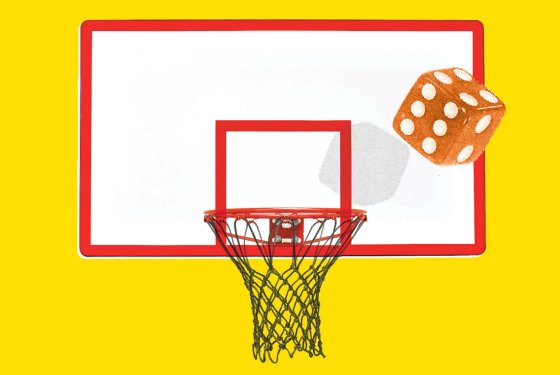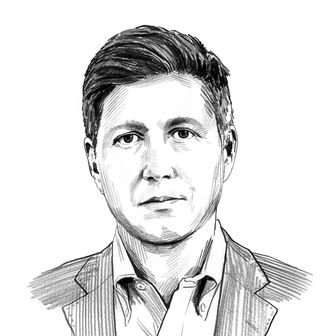
At what point during the Giants’ season-opening six-game losing streak did you start thinking about 2014? Was it Week Three, when the Carolina Panthers wiped the floor with them 38-0? Maybe the next week, when the Kansas City Chiefs blew them out 31-7? Or how about a week later, when Philadelphia, with someone named Nick Foles at quarterback, came into East Rutherford and embarrassed the Giants? If you somehow weathered all that, four days later, the record fell to 0-6 in Chicago, securing the team’s worst start since 1976, the first year at the old Giants Stadium.
Only one team in NFL history—the 1992 San Diego Chargers—started the season 0-4 and made the playoffs, and no 0-5 team had ever made it, let alone an 0-6 team. So it was inevitable that, at some point, fans would start thinking about 2014. And, in the NFL especially, looking forward to the following season means looking forward to the next draft. This is a league whose fans seem to get more excited about the three-day off-season extravaganza than the Super Bowl. The Giants are not a team stocked with maturing young talent; they haven’t drafted a player with a pick higher than fifteenth since trading for Eli Manning in 2004. So if this year was going to go to hell, maybe it should at least go to hell spectacularly enough to make it worth everyone’s while. Spectacularly enough to get some real talent come May.
This is called “tanking,” and it’s a basic principle of American sports: If your team is not going to win a championship, and your fans are loyal enough that you won’t risk alienating them forever with a losing season or two, it might be better to bottom out completely rather than float around average, mired in mediocrity, since the worse your team’s final record, the higher your pick will be in the next year’s draft.
Tanking is not a new strategy: The very existence of the NBA’s lottery-based system—which gives the worst teams only heavily weighted chances of securing top picks—speaks to the league’s desire to prevent teams from sprinting to the bottom. (In European soccer leagues, the bottom finishers are simply demoted to the equivalent of the minors, an even more effective incentive structure.) But in the past few years, tanking has come out of the closet: What used to be the desire of frustrated fans, and the source of rumor and suspicion among fans of their rivals, has become a widespread, public strategy. In Major League Baseball, the Houston Astros have slashed their payroll by nearly $80 million in the last five years, registering the worst record in baseball for three consecutive years and securing the top pick in three consecutive drafts (the third one is this coming June). But the most remarkable tanking is being done in the NBA this year. The Boston Celtics and Philadelphia 76ers—traditional and divisional rivals of the Knicks and the Nets, and two of the league’s more storied franchises—appear to have chosen to tank this entire season, trading most of their quality players to prepare for what is expected to be one of the best NBA drafts in decades (including, potentially, Kansas’s Andrew Wiggins, Duke’s Jabari Parker, and Kentucky’s Julius Randle, all of whom could be seen plying their considerable talents for the country to watch in Chicago last week). Tanking isn’t a humiliating strategy anymore: It’s actually sort of the hip new way of doing business. The G.M.’s of the Astros and the 76ers, Jeff Luhnow and Sam Hinkie, are considered among the smartest, freshest minds in the industry, the new-era Billy Beanes, and they seem to have decided the best way to win is to lose. But is it? Is tanking really something to cheer for? And most important: Does it even work?
The best example of tanking successfully doesn’t actually involve tanking at all. Heading into the 1996–97 season, the San Antonio Spurs were expected to compete for the Western Conference title, the same way they had the previous seven seasons. But All-Star center David Robinson missed the first eighteen games with a back injury, and then, just six games after returning, broke his foot and missed the rest of the year. The Spurs fell apart, finishing 20-62 a year after winning 59 games. But luck smiled on the Spurs. They ended up with the third-worst record in the NBA, but, in the draft lottery, the Ping-Pong balls fell their way; they passed Boston and Vancouver for the first pick and selected Tim Duncan, who became one of the best NBA players of all time and the centerpiece of a Spurs dynasty. That season was their only losing one out of the last 23—a tiny price to pay for four championships.
This is the gold standard. This is what every collapsing team wants, one lousy year in exchange for decades of domination. But this isn’t how it usually works. Tanking, even when it’s done by smart people—especially when it’s done by smart people—is fool’s gold.
First off, let’s look at the Duncan example. Not only is this not the exception that proves the rule: It’s not even an exception, since a couple of other teams that year tried torpedoing their own seasons and still didn’t land Duncan (there’s only one first pick every year, remember). And while the Spurs weren’t trying to tank when the season started, the Grizzlies and the Celtics surely were. Then–Celtics coach Rick Pitino has admitted that one of the main reasons he took the job that year was because of the chances of getting Duncan. When that didn’t work, the Celtics had no backup plan.
Second, even if you do get the draft pick you covet, choosing the right guy with it is a lot more difficult than it looks, because player evaluation and projection is hard. Really hard. In all sports. Much harder than G.M.’s would ever admit—their ability to do it being the main reason they have their jobs. This is the fundamental fallacy of tanking: Just because a team is in a position to choose talented players who will lead the team to newfound glory doesn’t mean it actually will.
Nevermind that the draft isn’t this constantly overflowing mug of superstar talent—in any sport. Of the top-ten picks in the last three NBA drafts, only two players—including Cleveland’s Kyrie Irving, whose team hasn’t won more than 24 games since LeBron James left—have made an All-Star game. Those studs probably entering the NBA next year? Their futures as superstars are far from secured: It wasn’t long ago that John Wall was going to save the Wizards, or Greg Oden was going to save the Trail Blazers, or, gasp, Andrea Bargnani was going to save the Raptors. And how about the NFL? Of the No. 1 picks since 2004, do you know the last one to reach a conference-championship game? Would you believe Eli Manning? How about championships? The last three men picked No. 1 overall to really lead their teams to Super Bowl wins? The two Manning brothers, and then Troy Aikman in 1989. Before that it was John Elway. That’s four men in 40 years. All 40 of those No. 1 picks, it’s fair to say, looked like franchise players to the teams that drafted them. But these are young men we’re talking about, none of whom have played against professionals and very few against even top-notch college talent. People change, bodies change, rules change: There is no such beast as a sure thing. By any reasonable standard, predicting which 19- or 20-year-old is going to become the 40th best in the world at something and the guy who is 100th best is impossible—the differences between them at that point are minuscule, and the factors that might separate them might not even be visible yet. But those separations make all the difference.
That uncertainty is one reason so many teams, across sports, have chosen to focus less on the draft in building their model rosters. (The champions the last three years in the NBA, the Miami Heat and the Dallas Mavericks, were built from trades and free agency.) So tanking probably isn’t going to win your team a championship. The one thing that is certain, though, is that you’re going to watch your team lose a lot. That’s the given. This is the issue the Houston Astros are having as they reconstruct their franchise. The Astros have a smart front office in place, but as they have begun to put together their master plan—which is no sure thing to succeed—their attendance has cratered. In 2004, the Astros were bringing in more than 38,000 fans a game; as recently as 2009, they were averaging about 31,000. Last year it was 20,393. Before the 2012 season, the Astros, noticing the problem, allowed fans to bring in their own food to the stadium. It didn’t work. If you are a fan of the Astros, you have seen your favorite team lose 324 games the last three seasons and win 162. That’s exactly a third of their games. That’s a lot of pain for a vague plan off in the distant future.
And that’s the masochism of tanking. When a team tanks, it basically asks its fans to hope their team loses—to accept that losing, on purpose, is in fact part of the plan—and to pay full price for the privilege. It is taking the maxim of the tortured Cubs fan, “Wait ’til next year,” and applying it to the current season before it even begins. If you’re the G.M. of a team like the Sixers or the Astros and you see poor decisions made by past generations of ownership, you might think this is your best chance: clear the decks and hit the reset button, shave your head just to see how it grows back. But all it assures is more defeat, perhaps more gruesome defeat. In that way, tanking isn’t tanking. It’s just losing.
Besides, hey, you never know: The Giants ended up going on a little winning streak after those six losses. Sure, their season is a mess. But they’re not out of the playoff hunt just yet.
You can write to Leitch at will.leitch@nymag.com.
